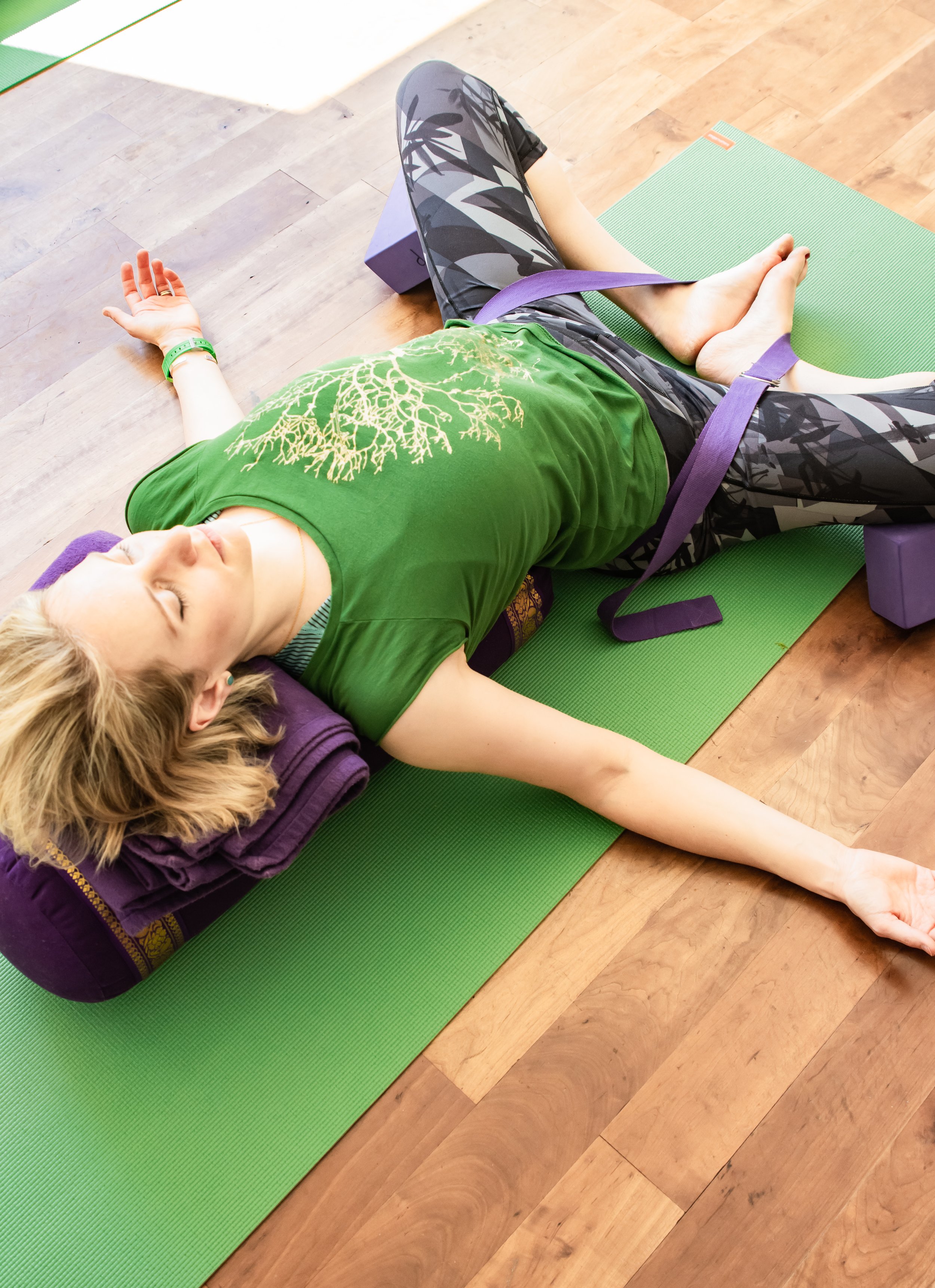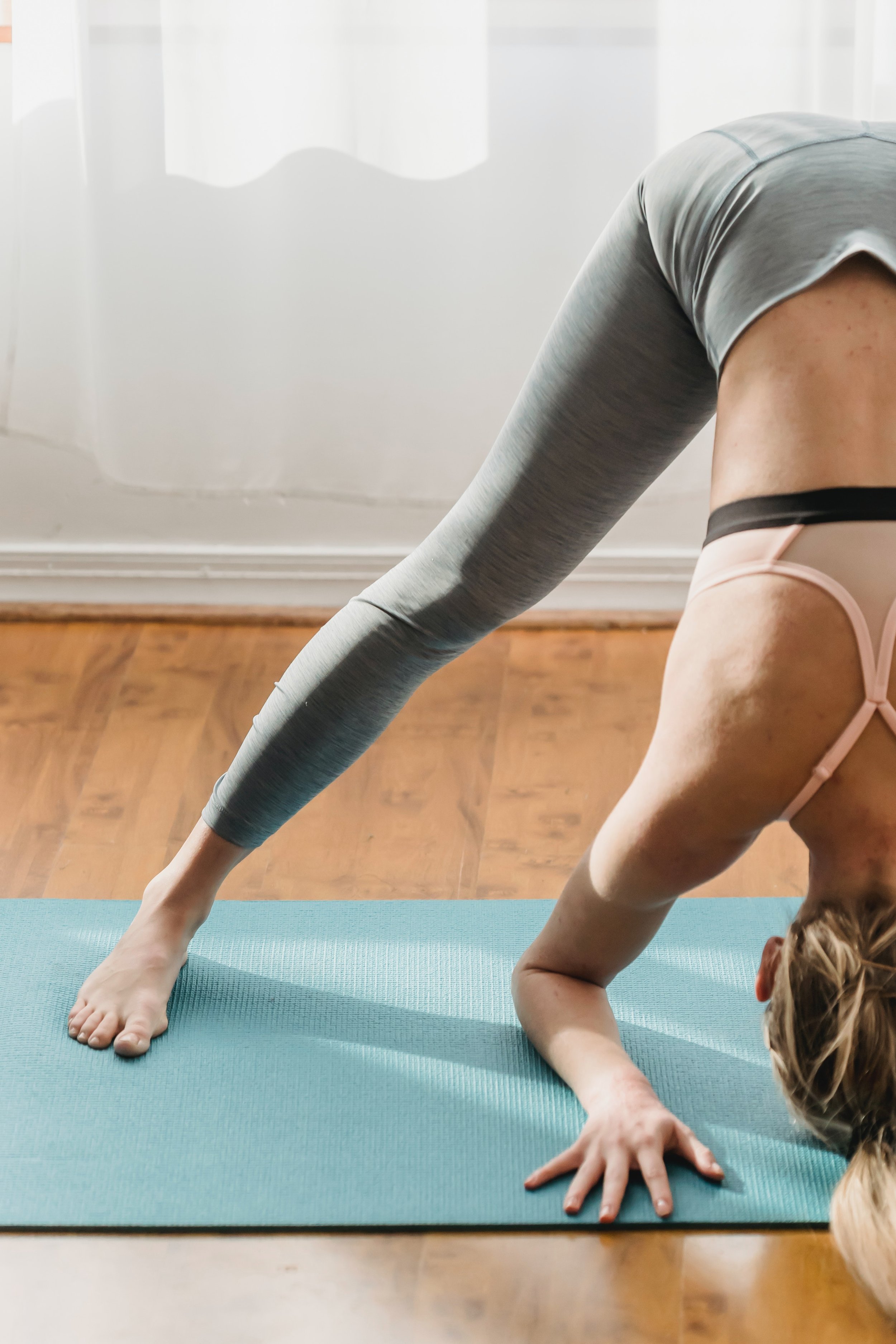It’s not easy to be content these days. FOMO is all around us and it’s catching. We get into the habit of upgrading and not just staying with what we have.
This attitude can affect how we feel about our yoga practice as well. Scrolling through Instagram it’s easy to feel that everyone’s practice is better than ours.
But it’s not about how yoga looks on the outside that’s important. Yes, we’re aiming to make the right shapes, but it’s what it’s doing on the inside and how we’re connecting our bodies that the real work happens.
What is contentment?
Contentment, or Santosha in Sanskrit, is one of the five niyamas, a personal ethical code which is one of the eight limbs of yoga. In yoga we need to cultivate contentment to make the mind a fit instrument for meditation, which is the ultimate purpose of the yoga poses we practice.
Originating from Latin and French, the middle English word ‘contentment’ has the literal meaning of ‘satisfaction from a claim or debt’. This puts a different spin on what we think of being content. It’s not a passive feeling, but an active reclaiming of something lost or wasted. We feel whole and that nothing is missing.
Action: Our posture can really impact mood and self-awareness. Try sitting up straight in your chair. Plant your feet on the floor and check that your spine is as tall as you can make it. Join your palms together in prayer pose or Namaskarasana and close your eyes. Connecting the palms brings us back to ourselves and pressing the base of the thumbs to the solar plexus centres us.
Namaskarasana or Prayer pose
But does being content mean that we’re passive?
There’s a misconception that being content means being without ambition or goals.
Contentment is about finding peace in every stage of life, but it doesn’t mean to never challenge yourself.
In the same vein, we can also apply contentment to an acceptance of our mixed successes in our yoga practice. Perhaps we can touch our toes after a long time of working at stretching the hamstrings. A student today touched her fingertips to her brick in Trikonasana, which for her was a great achievement. But for another student it might be kicking up in handstand for the first time.
Just because we can’t do something today, doesn’t mean we shouldn’t be content. We’re right where we’re meant to be.
Action: Make a list of the poses you’d like to get better at. This isn’t to make you feel bad about where you are today, but to give yourself a focus for the future.
How can we cultivate it?
This week I’ve been teaching restorative classes. Just because these are less active classes doesn’t mean they’re easier. In fact, for some students these classes pose a greater challenge as they require mental tenacity.
Supta Baddha Konasana
According to BKS Iyengar in Light on Life contentment ‘is an acceptance of one’s mixed lot as a human being.’ Restorative yoga is a great place to start when practising acceptance. We learn to accept the discomfort of the pose because a) we know there will be benefits in the long run and b) that the pose will end at some point! Which reminds me of that saying that gets trotted out in the face of adversity, which is that ‘Things will be alright in the end, and if they’re not alright, it’s not the end.’
Action: Give yourself ten minutes to practice one or two restorative poses. Suppta Baddha Konasana is the one that most of us remember (Reclining Bound angle pose).
How a yoga practice can help you to feel content
In the pursuit of happiness, remember: contentment is the only real wealth. Alfred Nobel
We can’t feel happy all the time. Life has thrown a lot at us in recent years, not to mention a global pandemic and a cost of living crisis. We can’t know what’s round the corner, but we can practice emotional stability, so that we can weather the ups and downs with a little more equanimity.
The final destination of the eight limbs of yoga is Samadhi, or bliss. From the physical postures we start to draw the attention inwards, leading to meditation, focus and stillness. Samadhi doesn’t mean that we don’t feel emotion, but that emotion no longer controls us.
I can’t say that yoga has solved all my problems, but my yoga practice has certainly given me a solid foundation from which to withstand the hardships along the way.
Action: Commit to a yoga practice, even if it’s once a week. Choose poses that are familiar and let your body start to let you know what you need to practice.



